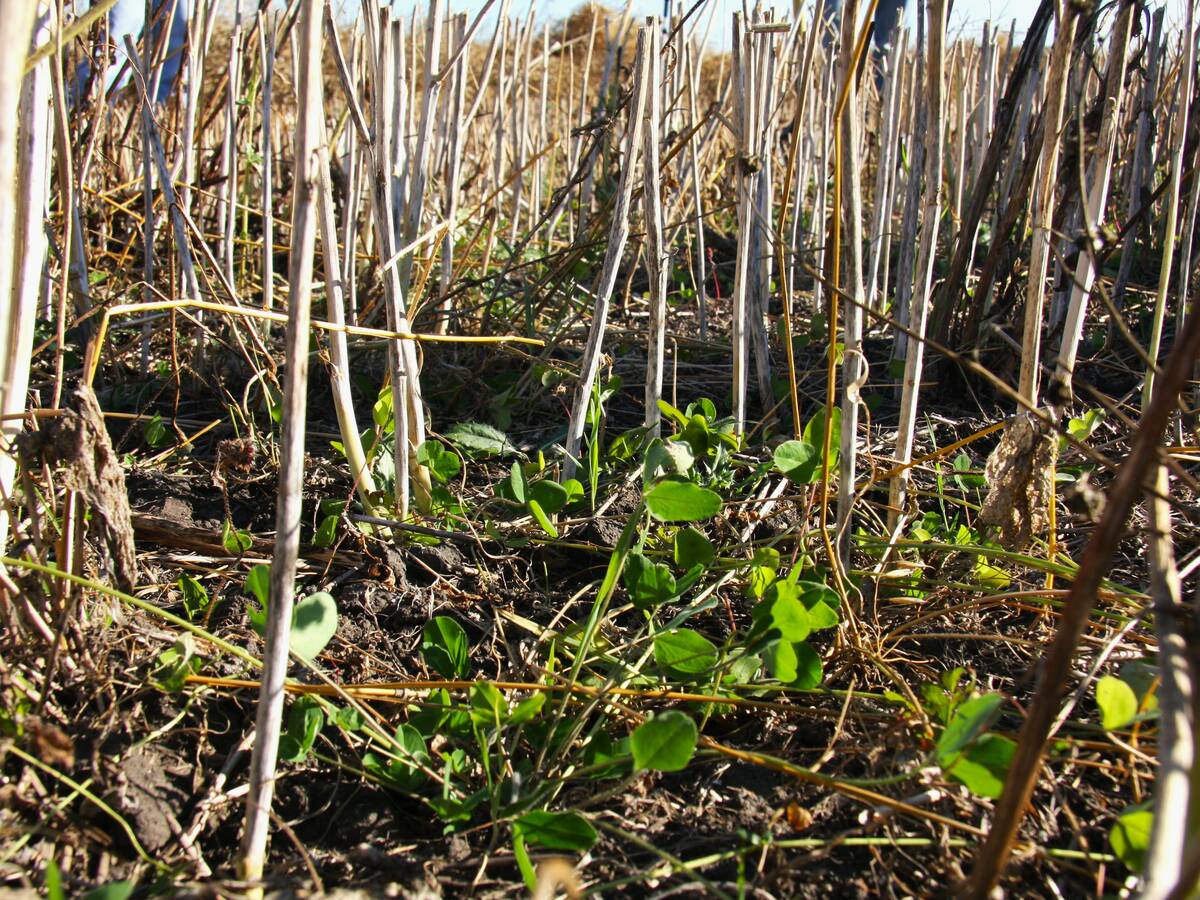Warm season row crops don’t compete with weeds early in the growing season, making them susceptible to resistance
A team of scientists looked at 283 sites in Manitoba in the fall of 2013, searching for glyphosate resistant kochia.
The researchers from Agriculture Canada, Manitoba Agriculture and the University of Manitoba eventually found two fields where kochia plants were resistant to glyphosate.
However, the fields weren’t in Western Manitoba, where kochia is a more abundant weed. Instead, they found it on corn and soybean fields in the Red River Valley.
Rob Gulden, a U of M weed scientist, said the kochia story partially explains where and why herbicide resistance develops.
Read Also

Saskatchewan project sees intercrop, cover crop benefit
An Indigenous-led Living Lab has been researching regenerative techniques is encouraging producers to consider incorporating intercrops and cover crops with their rotations.
Herbicide resistant weeds are more likely to occur in corn and soybeans because warm season, row crops don’t compete with weeds early in the growing season.
“It’s the row crops, where the rows are so wide and you’re not covering (the ground) … where we start to select for (herbicide resistance),” Gulden told the Canola Council of Canada’s CanoLab workshop in Brandon in early March.
However, canola and wheat, which are the dominant crops in western Manitoba, are highly competitive and choke out weeds early in the season.
“Those are very well adapted crops. They grow very aggressively in the spring,” Gulden said.
“To an extent, they’ve done a lot of weed control for us.”
Hugh Beckie, an Agriculture Canada weed scientist in Saskatoon and a herbicide resistance expert, said there is a relationship between row crops and glyphosate resistance because in-crop weed spraying is more common in corn and beans.
“Glyphosate resistance selection pressure is generally high in monoculture RR (Roundup Ready) soybean or frequent RR soybean/RR corn rotation,” he said.
“(It’s) similarly high in chem-fallow with traditional multiple glyphosate (only) applications. Worldwide, glyphosate resistance is correlated with bare ground, whether chem-fallow, vineyards, orchards, along fence lines, or wide inter-row crop areas, such as row-cropped corn and soybean.”
Manitoba has most of Western Canada’s soybean and corn acres, but other crops are also fertile ground for the development of herbicide resistant weeds.
Pulse crops are less competitive than canola and wheat, which increases herbicide use and can lead to herbicide resistance.
“Herbicide selection pressure for weed resistance can be relatively high if spraying abundant weed populations in-crop as a result of relatively poor crop competition … such as peas and lentils or if the crop was poorly established.”
Corn and soybean acres are expanding in Manitoba, but cool season crops such as canola and wheat still occupy most of the province’s farmland. Those crops and their ability to out-compete weeds have kept herbicide resistance in check, Gulden said.
“If we look at the global picture of herbicide resistance, in Manitoba we’re actually extremely well off.”
robert.arnason@producer.com















